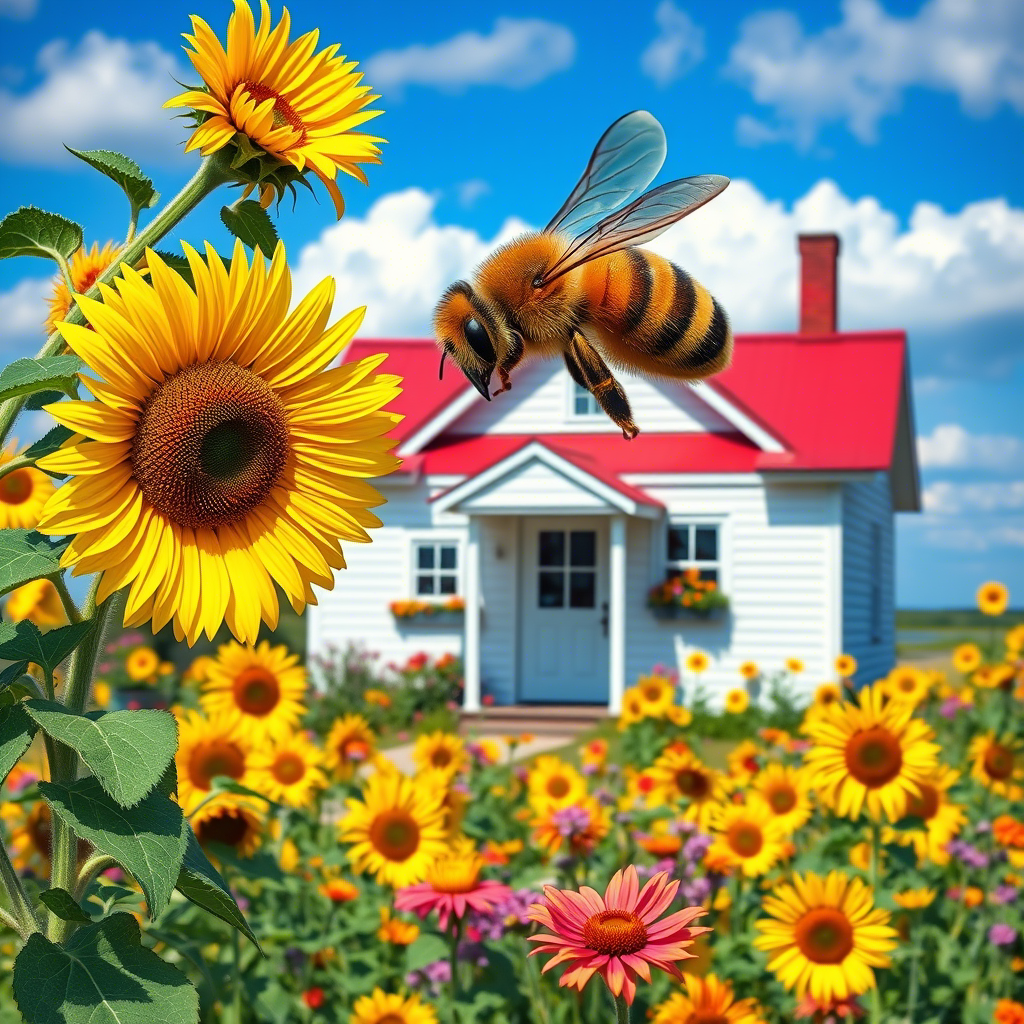The apiculture industry in India is burgeoning, driven by increased demand for natural products and sustainable practices. A Honey Bee Acres farm house offers a unique blend of agricultural productivity and entrepreneurial opportunity. This guide explores the setup, management, and revenue strategies to transform a bee farm into a profitable venture.
1. Setting Up Honey Bee Acres Farm House
Location Selection
- Opt for areas with diverse flora (e.g., Punjab, Maharashtra, Karnataka).
- Avoid pesticide-heavy agricultural zones.
Legal Requirements
- Registrations: FSSAI license, APEDA (for exports), GST registration.
- Environmental Clearances: Required if near protected areas.
Infrastructure
- Hive Types: Langstroth (modern) vs. traditional (e.g., clay pots).
- Equipment: Smokers, extractors, protective gear.
- Processing Unit: Honey filtration, storage tanks, packaging machinery.

Table 1: Initial Investment Breakdown
| Component | Estimated Cost (INR) |
|---|---|
| Land (1-2 acres) | 5,00,000 – 10,00,000 |
| Hives (50 units) | 1,00,000 |
| Equipment | 50,000 |
| Processing Unit | 2,00,000 |
| Total | 8,50,000 – 13,50,000 |
2. Bee Colony Management
Species Selection
- Native: Apis cerana indica (climate-resilient).
- Exotic: Apis mellifera (higher honey yield).
Forage Cultivation
Plant nectar-rich flora: Neem, Sunflower, Jamun, and medicinal herbs.
Seasonal Management
Table 2: Seasonal Tasks
| Season | Tasks |
|---|---|
| Spring | Swarm control, hive splitting |
| Monsoon | Hive ventilation, pest checks |
| Winter | Supplemental feeding (sugar syrup), insulation |
3. Revenue Streams from Beekeeping
Core Products
- Honey: Raw, organic, infused variants (e.g., turmeric, tulsi).
- Beeswax: Candles, cosmetics.
- Propolis/Royal Jelly: Nutraceutical markets.
Value-Added Products
- Beeswax candles, soaps, balms.
- Honey-based snacks (energy bars, spreads).
Table 3: Revenue Streams
| Product/Service | Description | Annual Income (INR) |
|---|---|---|
| Raw Honey (1,000 kg) | Sold @ INR 300/kg | 3,00,000 |
| Beeswax (200 kg) | Processed into candles | 1,00,000 |
| Farm Tours | 500 visitors @ INR 500/person | 2,50,000 |
| Workshops | Beekeeping training (50 participants) | 1,00,000 |
4. Diversification Strategies
Agritourism
- Educational tours, honey tasting, hive demonstrations.
- Collaborate with eco-tourism agencies for curated packages.
Workshops & Training
- Partner with NGOs/schools for sustainability programs.
API Therapy
- Leverage bee venom for holistic health treatments.

5. Marketing & Sales
Branding
- Emphasize organic certification, GI tags (e.g., Kashmir honey).
Sales Channels
- Online: Amazon, Flipkart, dedicated website.
- Exports: Target Europe/USA via APEDA guidelines.
Community Engagement
- Attend farmers’ markets, sponsor wellness events.
6. Challenges & Solutions
Table 4: Common Challenges
| Challenge | Solution |
|---|---|
| Pesticide Exposure | Collaborate with farmers for organic practices |
| Climate Change | Plant drought-resistant flora |
| Hive Theft | Install CCTV, community vigilance |
7. Financial Planning
ROI Timeline
- Break-even in 2–3 years with diversified income.
Government Schemes
- Subsidies via National Bee Board, NABARD loans.
Conclusion
A Honey Bee Acres farm house combines ecological impact with financial viability. By integrating apiculture, agritourism, and innovative product lines, entrepreneurs can tap into India’s growing demand for sustainable products while contributing to biodiversity.
Final Table: Annual Revenue Projection
| Stream | Income (INR) |
|---|---|
| Honey Sales | 3,00,000 |
| Beeswax Products | 1,00,000 |
| Agritourism | 2,50,000 |
| Workshops | 1,00,000 |
| Total | 7,50,000 |
By adopting strategic management and leveraging India’s apiculture potential, Honey Bee Acres can emerge as a profitable, eco-conscious enterprise.
